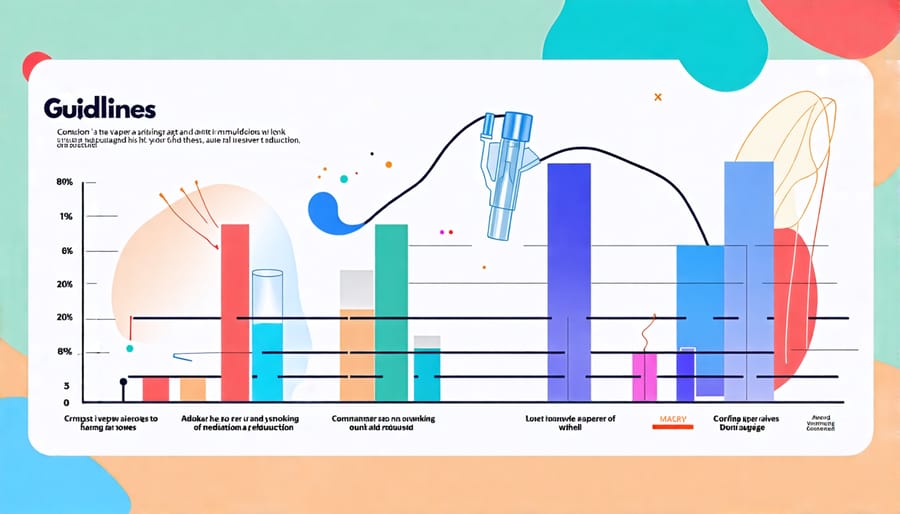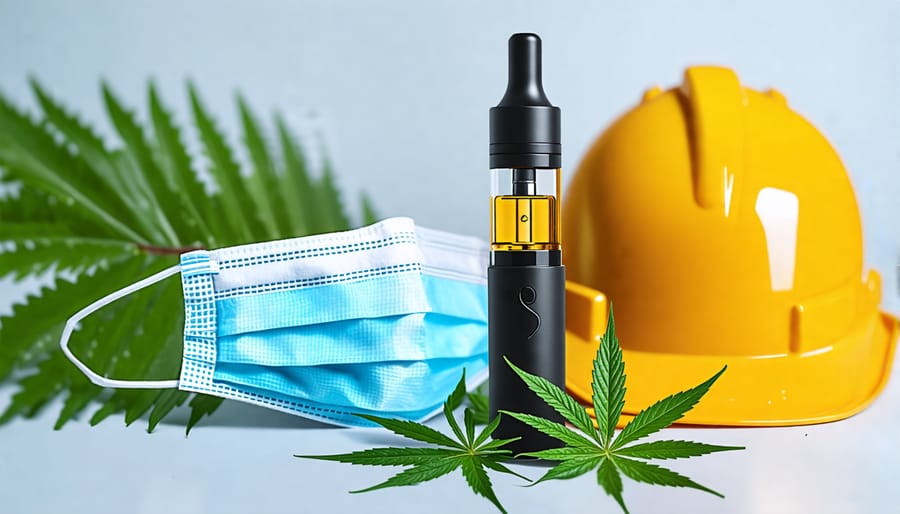The growing interest in THC vaping as a harm reduction strategy raises important questions about safety and effectiveness. While consumers might explore thca vape carts as an alternative to traditional smoking methods, understanding the risks and benefits is crucial for making informed decisions. This analysis examines the safety considerations of THC vape cartridges, exploring harm reduction principles and responsible usage practices to help users navigate this evolving landscape.
Understanding THC Vape Cartridges
What Are THC Vape Cartridges?
THC vape cartridges are small, pre-filled units containing cannabis oil rich in tetrahydrocannabinol (THC), the compound responsible for the psychoactive effects of cannabis. These cartridges attach to a battery-operated device, known as a vape pen, which heats the oil to produce inhalable vapor. Designed as an alternative to traditional smoking methods, THC vape cartridges offer a more discreet and less odorous way to consume cannabis. They come in a variety of strains and concentrations, catering to different preferences and needs. For adults exploring harm reduction strategies, these cartridges may present a less harmful option compared to smoking, as they avoid combustion-related toxins. However, it’s crucial to understand potential risks and practice responsible vaping to enhance safety.

Popularity Among Adult Users
THC vape cartridges are becoming increasingly popular among adults looking for alternative ways to enjoy cannabis with potentially reduced health risks. Unlike smoking, vaping can deliver cannabinoids without combustion, which minimizes exposure to harmful toxins. Many adults appreciate this feature as part of a harm reduction strategy. The convenience and discretion offered by vaping also contribute to its growing appeal. With advancements in the latest vape technology, consumers now have access to more efficient and user-friendly devices. Despite their benefits, it’s important to remain mindful of the associated risks, such as product quality and ingredient transparency. Responsible use involves selecting reliable products from reputable sources and being informed about the potential effects and health implications. By staying informed, adult users can enjoy the benefits of THC vape cartridges while prioritizing safety and well-being.
The Concept of Harm Reduction
Defining Harm Reduction
Harm reduction is a pragmatic approach aimed at minimizing the negative health outcomes associated with certain behaviors, rather than focusing solely on eliminating the behaviors themselves. In the context of vaping, harm reduction acknowledges that while smoking cessation is the ideal goal, transitioning from traditional smoking to vaping can potentially reduce the harm caused by inhaling tobacco smoke. This is particularly relevant for people who are looking for less harmful ways to consume THC, found in cannabis.
Utilizing THC vape cartridges can be a viable alternative, as they allow users to avoid the combustion process associated with smoking cannabis. This shift from combustion to vaporization can significantly decrease the intake of harmful toxins. However, it’s essential to highlight that while vaping is considered less harmful than smoking, it is not entirely risk-free. Responsible use, including using products from reputable vendors and being informed about the ingredients, is crucial in maximizing the benefits of harm reduction. Approaching vaping thoughtfully and with caution can help users make informed choices that align with their preferences and health goals.

Vaping vs. Smoking: A Comparative Perspective
When considering harm reduction, many see vaping as a potentially less harmful alternative to smoking, particularly when it comes to using THC vape cartridges. Unlike traditional smoking, which involves burning tobacco or cannabis and inhaling harmful smoke and tar, vaping heats the substance just enough to create a vapor, thereby reducing exposure to harmful byproducts. This distinction is crucial in the ongoing debate over vaping versus smoking, as vapers often inhale fewer toxic chemicals compared to smokers. Moreover, the technology behind vaping devices provides more control over what is consumed, which can appeal to those looking for cleaner alternatives. However, it’s vital to emphasize that less harmful doesn’t mean risk-free. Vaping requires responsible practices, including choosing reputable products and staying informed about the potential health impacts. Approaching vaping from a place of informed choice can be a strategic part of a larger harm reduction plan for those transitioning away from traditional smoking.
Safety Considerations and Risks
Potential Health Risks
Vaping THC cartridges can present several health risks, and understanding these is crucial for those using them as part of a harm reduction strategy. One of the primary concerns is the presence of harmful additives, such as vitamin E acetate, which has been linked to severe lung injury. To mitigate this risk, it’s vital to purchase cartridges from reputable sources that provide third-party lab testing results. Another potential issue is the inhalation of toxic substances created when cartridges are overheated. To address this, ensure your device is used at the correct temperature settings to avoid combustion.
Additionally, there’s the risk of consuming a higher dose of THC than intended, especially for those new to vaping. This can lead to anxiety, paranoia, or other unwanted side effects. Starting with low doses and waiting between hits can help manage these effects. Long-term use may also contribute to respiratory issues, though generally considered less harmful than smoking. Regular breaks and monitoring your body’s response can reduce these risks. By staying informed and making mindful choices, you can navigate the potential risks associated with THC vape cartridges more safely while adhering to harm reduction principles.
Responsible Usage Tips
When using THC vape cartridges, taking a responsible approach is essential to reducing potential harm. Begin by ensuring you understand the THC concentration in your cartridge, as effects can vary significantly between products. Start with a lower dose and gradually increase it if needed, allowing your body to adjust and reducing the chance of unpleasant reactions. It’s crucial to purchase cartridges from reputable sources, as these are more likely to undergo quality checks, reducing the risk of harmful additives. Always store cartridges away from heat and direct sunlight to maintain their integrity. Listening to your body is key—pay attention to how you feel and avoid vaping in excess, especially in social settings where it can be easy to lose track. Remember that combining THC with alcohol or other substances can amplify effects, so approach such combinations with caution. Lastly, keep informed about local regulations and guidelines regarding vaping to ensure compliance and promote safe practices.

Legal and Ethical Considerations
Legal Status Overview
The legal status of THC vape cartridges varies widely across regions, impacting users seeking harm reduction. In the United States, for instance, THC products are legal in some states for recreational use, while others only permit them for medical purposes or prohibit them entirely. In Canada, adults can legally purchase THC cartridges due to nationwide legalization. Conversely, many countries in Europe, Asia, and elsewhere maintain strict bans on THC products. This patchwork of regulations can influence access and safety standards for users who view vaping as a harm reduction strategy. Understanding local laws is crucial for responsible use and ensuring compliance.
Ethical Considerations
When discussing THC vape cartridges, ethical considerations are paramount for both users and producers. Users need to be informed and mindful about the potential risks and health implications associated with vaping THC, ensuring they access products responsibly and from reputable sources to minimize harm. Producers have a responsibility to maintain high standards of transparency and quality, prioritizing user safety by avoiding harmful additives and ensuring accurate labeling. Marketing efforts should be ethical, refraining from targeting underage individuals or making misleading health claims. Together, informed choices and responsible production practices can significantly contribute to harm reduction in the cannabis vaping landscape.
Conclusion
As we conclude this exploration into THC vape cartridges, it’s clear that while these devices offer a promising alternative for adult smokers seeking harm reduction, they come with their own set of considerations. The potential benefits of THC cartridges include a more discreet consumption method and reduced exposure to harmful combustion-related toxins, which can contribute to an overall harm reduction strategy. However, it’s important to remain aware of the inherent risks, such as potential lung health implications and the variability in product quality and consistency. Engaging in responsible vaping practices, such as sourcing products from reputable suppliers and being mindful of dosage, is crucial for minimizing these risks. Additionally, staying informed about emerging research and regulations can help ensure safer and more informed decisions. As the landscape of vaping continues to evolve, prioritizing harm reduction strategies will enable individuals to make choices that align with their health goals and lifestyle preferences.



